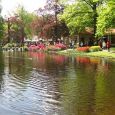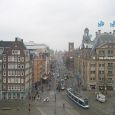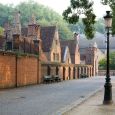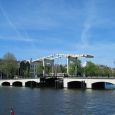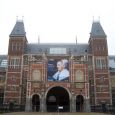Amsterdam
Advertisement
By Air
Amsterdam Schiphol Airport is located only 14kms from the city centre and is a modern facility offering daily scheduled flights to and from a large number of Dutch, EU and international destinations. The quickest and easiest way to travel to Schiphol is by train. There is a direct service to Schiphol Airport from Amsterdam Centraal Station. Other options include buses, taxis, hire cars and even bicycles.
By Ferry
Ferries to Amsterdam depart daily from Newcastle in the UK. The nearest port to Amsterdam is in Ijmuiden, just 29kms from Amsterdam.
By Bus
Buses depart from the bus terminal outside Amstel Station. You can take the metro five stops from Centraal Station to get here. Bus services from a number of European cities including London, Brussels, Paris, Copenhagen and Berlin are provided by Eurolines
By Rail
Train travel to Amsterdam is a popular option within Europe, with Inter City connections to and from Brussels, London, Paris, Hamburg and Berlin as well as from Frankfurt. All other destinations in Holland are located no more than 2 hours, 30 minutes from Amsterdam by rail. Rail passes and other discounts are widely available and reservations are highly recommended.
Advertisement
Dam
The Dam is the very centre and heart of Amsterdam, although there are arguably prettier sights in the city. As a historical site however, it is fascinating and worth taking the time to appreciate. The Dam has seen many historical dramas unfold over the years, and was for example, the reception area for Napoleon and his troops during the 1808 takeover of the city. The impressive history of the square is well documented in the Amsterdam Historical Museum. The Royal Palace, which dominates the square, was originally used as the Town Hall and its classical façade and fine sculptures were intended to glorify the city of Amsterdam and its government. In contrast to its turbulent history, the square is now a peaceful place and is home to hundreds of pigeons. It is also a popular place for tourists resting their tired feet.
Dutch National Museum
The world-famous Dutch National Museum of art goes back to the time of King Louis Napoleon who wanted to make Amsterdam a center for art and science. In 1809 he set up the Grand Musée Royal in his palace on the Dam. Works from the national museum in The Hague, which had been opened in 1798, and a few pieces belonging to the city (including Rembrandt's "Night Watch") formed the basis for this museum, which grew swiftly with the purchase of various collections. Soon the palace rooms could no longer hold all the works, so eight years after its foundation the National Museum was transferred to the Trippenhuis. More purchases and gifts over the next few years made another move inevitable. It was finally decided that a museum in neo- Gothic should be built on the Stadhouderskade (1877-85). The architect was P. H. J. Cuypers. Today the Rijksmuseum has about 7million works of art, including 5,000 paintings in over 250 rooms, a library with some 35,000 volumes and about 21,000 auction catalogues. Apart from its unique collection of old masters, it offers an exhaustive account of the development of art and culture in the Netherlands and is especially rich in old Dutch handicrafts, medieval Dutch sculpture and modern Dutch paintings.
Keukenhof
Only 1km/.75mi northwest of Lisse is Keukenhof. During the Middle Ages this 28 hectare/70 acre park was the "kitchen garden" of an estate belonging to Countess Jacobaea of Bavaria. Since 1949 it has been a popular tourist attraction, with restaurants and sunny terraces, exhibitions and presentations of various kinds. The Keukenhof is the world's largest open-air flower show. Every year more than 700 varieties of tulips can be seen in bloom here. The charm of Keukenhof lies in its endless variety of color and, even before the flowers bloom in the open, thousands of tulips, hyacinths, crocuses and daffodils can be seen flowering in the 5,000 sq.m/6,000 sq.yd of hothouses. The park itself is also very beautiful, with its lakes and
watercourses and old trees.
Beguinage
The Beguinage lies hidden away from the noisy shopping street, Kalverstraat, next to the History Museum. The English Reformed Church and an earlier Italian Catholic chapel can be found here. Most of the houses in the area were built in the 17th century; the oldest house in Amsterdam, made of wood and dating from 1475, is also here. Wooden houses slowly disappeared because the city forbade construction in order to prevent fire in the densely populated inner city. The little courtyards were created by small, religious communities in an attempt to retreat from the world and live their own isolated and devoted lives. The Begijnen, a Catholic order, was only tolerated after the Reformation in the 16th century. Only single women are allowed in the Begijnhof to lead the life of a nun.
Magere Brug
The famous skinny bridge across the River Amstel and opposite the Carré theatre is an Old Dutch design wooden bridge, known as a double-swipe bridge. Tradition relates that the bridge was named after the sisters Mager, who were supposed to have lived on opposite sides of the river. They are said to have had the wooden bridge built to make it easier to visit one another. However, it appears more likely that the original bridge acquired the name from being so narrow (mager meaning ‘skinny’ in Dutch) that it was hard for two pedestrians to pass one another when crossing the bridge at the same time.
As traffic along the River Amstel increased, a wider bridge replaced the narrow one, in 1871. ‘Skinny Bridge’ is not skinny anymore, but one of the most beautiful bridges of Amsterdam. At night, many lights illuminate the bridge and it becomes a very romantic place, popular with lovers and photographers.
April - July
July - August -> 22(°C) - Summer
January - February -> 0(°C) - Spring
Advertisement

